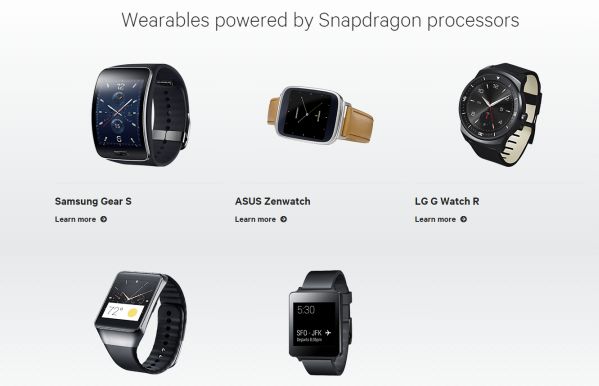We wanted to learn a bit more about Qualcomm's plans for wearables and it turns out that the company believes its Snapdragon 400 SoC is the right chip for the new form factor.
We are sure that the company is cocking some new products as well, or that it can use the future processors such as Snapdragon 410 or 415, both 64-bit capable, but for now, the top choice for your smartwatch is Snapdragon 400.
This was confirmed in our recent talk with Michelle Leyden-Li, Senior Director of Marketing, QCT at Qualcomm and she said that all Snapdragon products are created with low power and high performance in mind. This is why the same chip can end up in multiple platforms including wearable devices – smart watches, glasses, phones and even tablets.
Snapdragon 400 is a good choice for IoT
Apple chose to make S1 SoC especially for the Apple Watch and MediaTek announced its first SoC for wearables too. MediaTek based LinkIt platform powered with MediaTek Aster MT2502A processor looks like an interesting proposition for low cost wearables such as fitness trackers.
Qualcomm already has almost every smartwatch, including the LG G Watch, LG G Watch R, Samsung Gear S, Samsung Gear Live and Asus Zenwatch. The Moto 360 is not on the list, as Motorola chose to use an ancient 45nm OMAP 3630 SoC.

Some might argue that the Snapdragon 400, with speeds up to 1.7GHz in the dual-core Krait 300 version or up to 1.4GHz in a quad-core ARM Cortex A7 configuration might be overkill for watches. The chip supports 24-bit WXGA (1280x800) + 1080p external display via Adreno 306 GPU and it more than enough to drive 280x280 or 320x320 screens used in most Android Wear watches.
Snapdragon 400 too good for a watch?
Once Qualcomm announces an Android Wear specific SoC, the story might change, but until then Snapdragon 400 will be the dominant option for early smartwatch adopters. An SoC in 20nm for wearables in 2015 makes perfect sense, but at this time there is nothing that Qualcomm wants to announce.
It looks like we all need a crystal ball to see what happens with the wearable market, as it is very difficult to make predictions when it comes to entirely new product classes.
Smartwatches need a good operating system, the right SoC for the job and the rest of the platform combined has to be combined with beautiful design, decent battery life and good functionality in order to make a successful product. This has yet to happen, as the current generation is simply not there yet.




